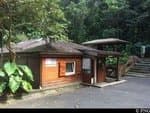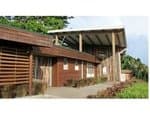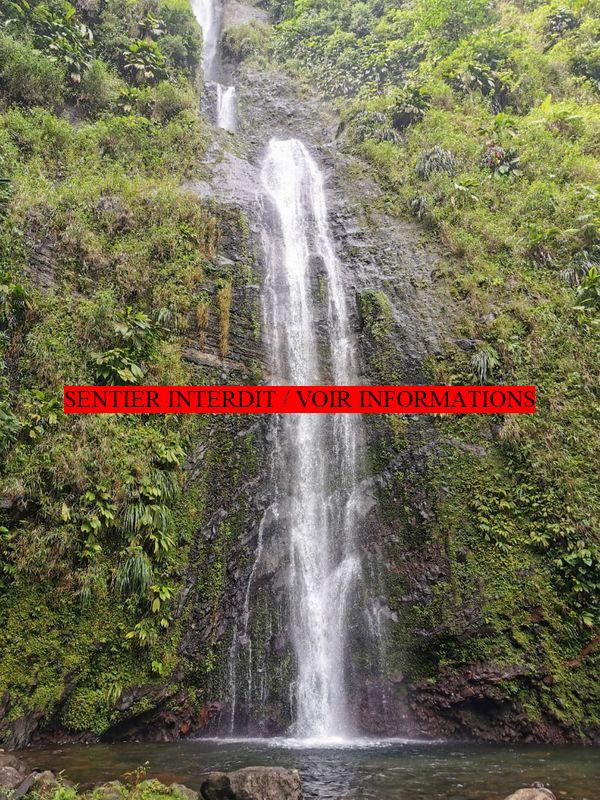
Moreau waterfalls
In 1825, Boyer-Peyreleau wrote: "Goyave is a town with the most beautiful rivers in the colony: fine and clear, not designed to allow boats to pass in its waters, but for pastoral nymphs to bathe their feet".
16 points of interest
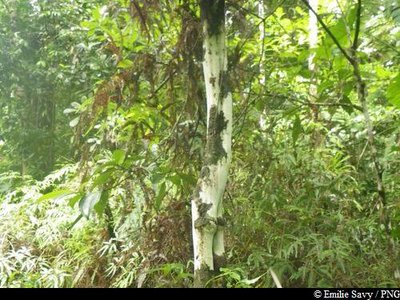
Bois cotelette blanc - Emilie Savy / PNG  Flora
FloraMiconia mirabilis
Miconia mirablis has a fluted trunk with white bark. As it is a light-loving tree, this pioneer has hard wood that is distinctive of open areas.
It is often found on paths alongside tree ferns or trumpet trees.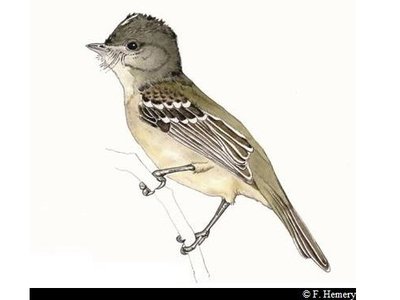
Elenie siffleuse - F. Hemery  Fauna
FaunaCaribbean elaenia
Most noticeable for the contrast between its olive green head and whiteish belly, the Caribbean elaenia (Elaenia martinica) feeds on fruit and insects. It is a regular visitor to all natural environments in the Lesser Antilles.
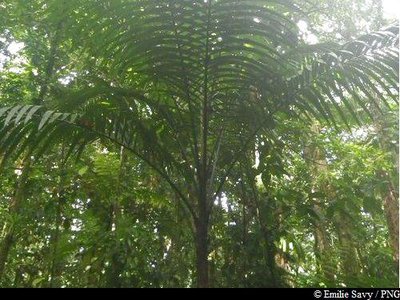
Palmier montagne - Emilie Savy / PNG  Flora
FloraThe Sierran palm
The Sierran Palm (Prestoea montana) is a member of the Arecaceae family. Despite its size, it is in fact a palm tree. Like ferns, it does not have a trunk but a stipe. It can live in both hygrophilous forest, where it can reach a height of ten metres, and at altitude, where it does not grow beyond two metres.
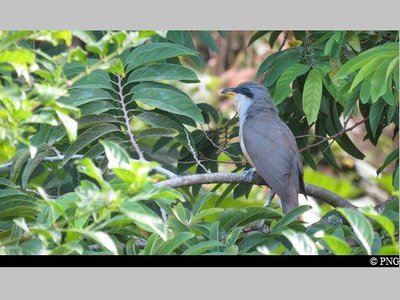
"Coucou manioc" - PNG  Fauna
FaunaMangrove cuckoo
Measuring 28-31 cm, the Mangrove cuckoo (Coccyzus minor) is recognisable for the black patch over one eye, for its long, layered tail and for its beak, which curves downwards.
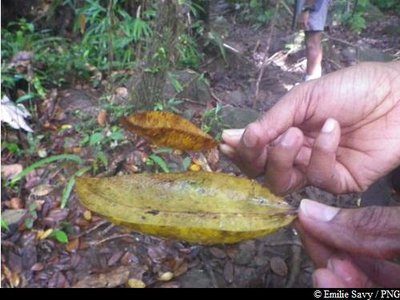
Feuilles du Gommier blanc - Emilie Savy / PNG  Flora
FloraThe Gommier
The Gommier (Daryodes excelsa) can grow up to 35m high. When they are damaged, its white trunk and roots exude a white resin with a pungent turpentine smell, which is traditionally used as incense or to start fires, because it burns slowly regardless of the surrounding humidity. It is reported that the tree has the ability to cast out spirits. It is strictly forbidden to take away any plant parts from the National Park. Its trunk was used by American Indians to make their canoes (kanawa), and is still used today by coastal people from many tropical countries, such as Dominique, to make fishing vessels. Its green seeds are popular with pigeons.
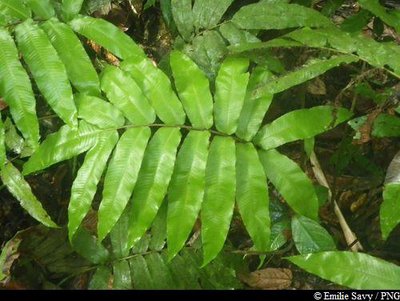
Fougère royale - Emilie Savy / PNG  Flora
FloraThe station of royal ferns
A member of the Osmondaceae family, Osmunda regalis is found along river banks and in the undergrowth. It forms a layer of vegetation, providing a felt-like to feel to the places that it inhabits.
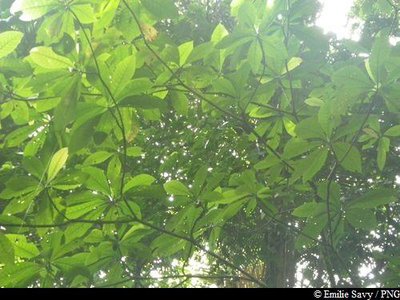
Le Résolu - Emilie Savy / PNG  Flora
FloraChimarrhis cymosa
Chimarrhis cymosa belongs to the Rubiaceae family. It has yellow-orange coloured, very hard wood. Its straight trunk is covered in a clear and smooth bark. Its leaves are light green, wide and long. Flowering occurs between April and May and between October and November, when the top of the tree is covered in white flowers. Given the robustness of the wood, which does not suffer attacks by insects, it was used to make the flooring of traditional Creole houses.

Termitière - Emilie Savy / PNG  Fauna
FaunaTermite mounds
Termites (Nasutiterme costalis) belong to the class of insects.
Termites fashion termite mounds at the foot of the tree that they have been feeding on. Either fixed in the ground or aerial, these structures can be hung on a tree trunk. Termites use it as a nest, where they live in a colony.
Différence entre Châtaignier Grandes Feuilles et Petites Feuilles - Emilie Savy / PNG  Flora
FloraSloaena massoni
Sloanea massoni, the large-leaved chestnut tree, has leaves measuring around 60 centimetres. It boasts some impressive buttresses and its fruits are themselves in the shape of chestnut husks.

Ravine Racoon - Emilie Savy / PNG  Viewpoint
ViewpointRavine Racoon
Views of Ravine Racoon.

tronc du Bwa bandé - Fabien Salles / PNG  Flora
Flora"Bwa bandé"
Richeria grandis belongs to the Phyllanthaceae family. It is a large variety, distinctive for its tough leaves and reddish-brown bark that so often falls victim to rogue extraction. Also known as bwa bandé in Créole, it is renowned for its aphrodisiac qualities. Its wood is used as timber or in carpentry. It has very distinctive, green, grape-like fruits which form small pods and form copiously on its branches.
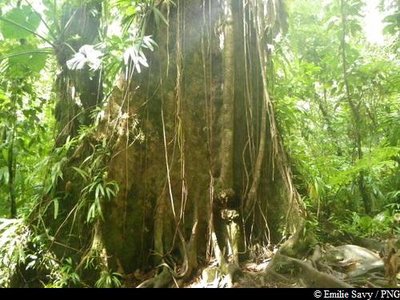
Acomat boucan - Emilie Savy / PNG  Flora
FloraAcomat boucan
Sloanea caribaea belongs to the Elaeocarpaceae family. It is an extremely large tree that can reach up to 40 metres in height. It is the most spectacular tree in the Sloanea genus. It has an exposed trunk and magnificent buttresses. Its bark is reddish-brown and tends to flake off in thin strips when the tree ages. Formerly, visitors to the forest would make us of its enormous buttresses to shelter their fires and to smoke meat. We now know that lighting fires among the roots is not conducive to the well-being of trees.
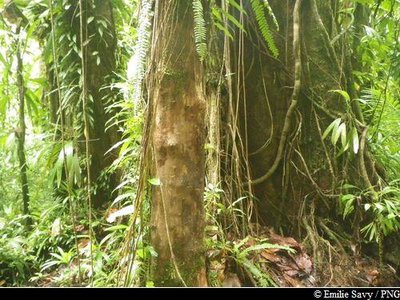
Goyavier montagne - Emilie Savy / PNG  Flora
FloraMountain guava
Eugenia pseudopsidium, also known as the mountain guava, belongs to the family of Myrtaceae.
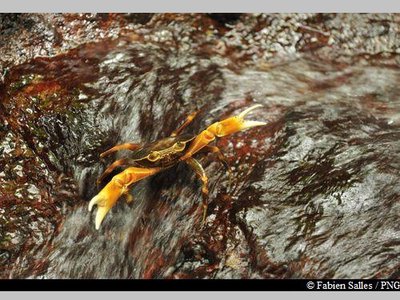
Crabe cirique - Fabien Salles / PNG  Fauna
FaunaCirique crab
The cirique crab is average in size. It has an oval and flattened carapace. Adults are yellow and chocolate coloured, while juveniles are darker: black with orange claws.
An omnivore that feeds on seeds, fruits and organic waste, this crab can also occasionally hunt prey its own size.
It lives in the rivers of tropical forests, often at altitude. It digs shallow holes in river banks for shelter. It is the only crab from our rivers which completes its life cycle solely in freshwater.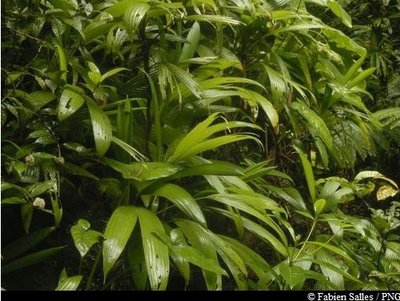
"Ailes à mouches" - Fabien Salles / PNG  Flora
FloraWall of giant Asplundia rigida
A member of the Cyclantaceae family, Asplundia rigida can be translated literally as "Fly wings" on account of its similarity with the insect.
A typical species of moist forest undergrowth, there are three species in the Asplundia genus. Two terrestrial and one epiphytic and lianescent (vines climbing from aerial routes).
Petite cascade - Emilie Savy / PNG  River and waterfall
River and waterfallSmall waterfall
There is a small waterfall visible near the trail.
Description
Hiking trail colour: yellow
The start of the trail leading to the Chutes Moreau is at the bottom of the car park, after the information boards for the National Park. Go past the small bridge and start to climb the stairs, the trail then heads off to the right. Muddy and covered with uneven roots in the soil, the path is slippery. There are no obvious intersections on this hike. Just follow the trail and be careful not to lose the way. You will need to cross the river a number of times throughout the trail, so make sure that you return to the path each time. Much of the trail is made up of crossings (cairns and small piles of stones are arranged on both sides of the river and act as helpful landmarks), but sometimes you enter the river to return to the same bank and then come out further on. The entrance to the National Park is marked by signs with the park's colours. During the last 30 minutes of walking, there are some quite steep walls towards the end of the trail that lead to the foot of the Chutes Moreau. With the aid of some ropes, they are set up in such a way that you should be able to cross them relatively easily.
- Departure : Moreau (end of the forest road), Goyave parking area
- Arrival : Moreau (end of the forest road), Goyave parking area
- Towns crossed : Goyave
Altimetric profile
Recommandations
This route is hazardous when it is raining. Do not plan a hike if it has been raining the day before or if bad weather is forecast. If water levels are rising, do not try to cross the river. Wait until they return to normal.
Extra care should be taken in this natural environment, as Guadeloupe is prone to natural risks. For the benefit of all hikers, responsible behaviour is requested.
Please note : the parking and swimming areas are not supervised.
Information desks
Maison de la Forêt
RD 23 - Route de la Traversée, 97170 Petit-Bourg
Opening hours :
- In low season (May 1 to June 30 and September 1 to October 31) : every day (except weekends) from 9 am to 4.30 pm.
- In high season (November 1 to April 30 and from July 1 to August 31) : every day from 9 am to 4.30 pm ; sunday from 9 am to 12.30 pm.
Services: reception, permanent exhibition, free parking, picnic area nearby. Building accessible to people with reduced mobility.
Please note : parkings are not supervised.
Localisation GPS : Lat: 16,17600 N - Lng: 61,69280 W.
Headquarters of the National Park of Guadeloupe
Montéran, 97120 Saint-Claude
The reception and shop are open to the public :
- Monday, Tuesday and Thursday : 8 am to 12.30 pm and 2 pm to 5 pm.
- Wednesday : from 8 am to 1 pm.
- Friday : 8 am to 12.30 pm.
Services : reception, shop, toilets, free parking. Building accessible to people with reduced mobility.
Localisation GPS : Lat: 16,01634 N - Lng: 61,70753 W.
Access and parking
GPS coordinates of the start point : Lat : 16,11745 N - Long : 61,62737 W.
On Route RN1 to Goyave, do not follow signs to "Bois Sec/Bonfils/Moreau", but head towards "Douville/Chutes Moreau", on Route C7.
The road gradually gets narrower and becomes a forest track. Follow the road uphill for 8 km. Park at the end of the road in the area provided.
Parking :
Accessibility
At the parking area at the start, 400 metres of wooden decking has been put down by the National Forestry Board, which suggests an informative circular trail accessible to persons of reduced mobility and the visually impaired, with the aid of Braille signs.
- Emergency number :
- 114
More information
Source
Report a problem or an error
If you have found an error on this page or if you have noticed any problems during your hike, please report them to us here:

